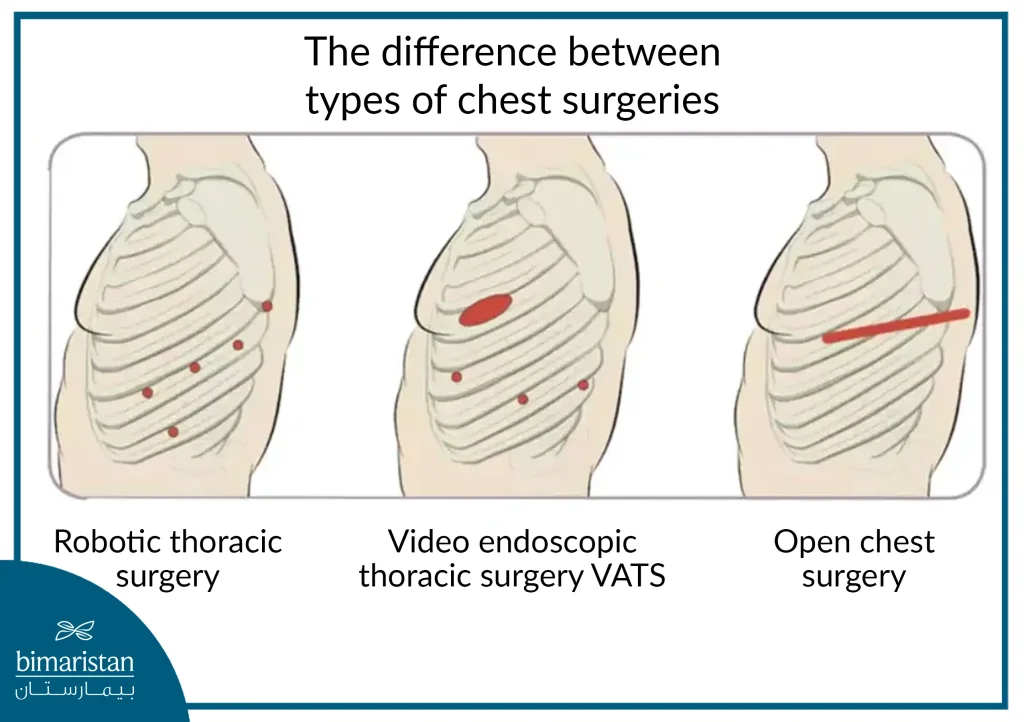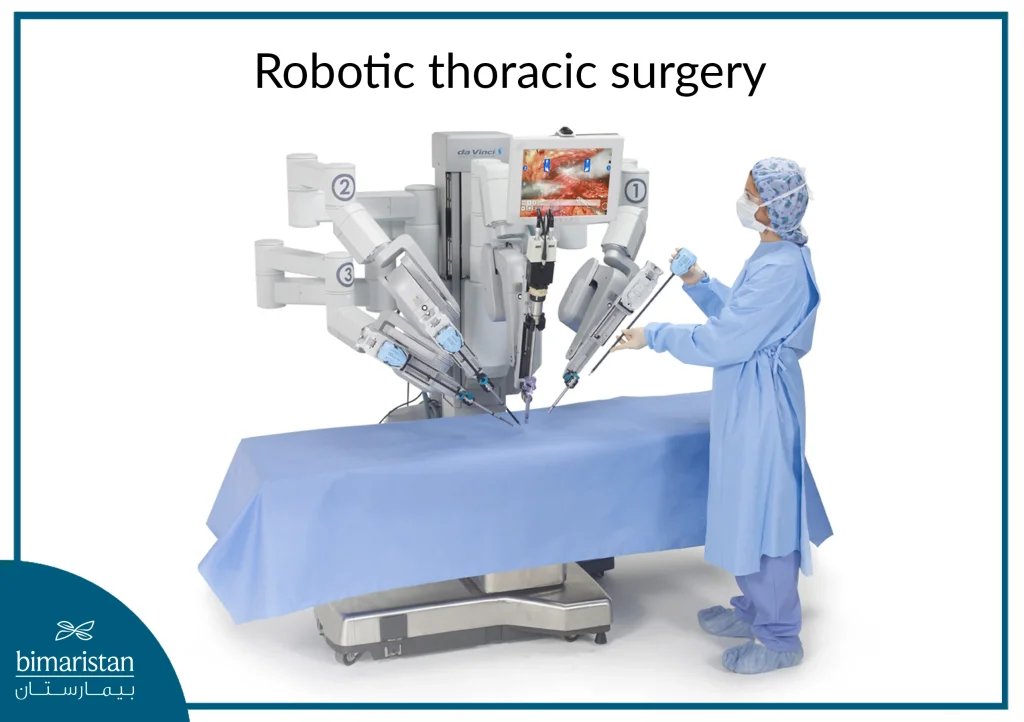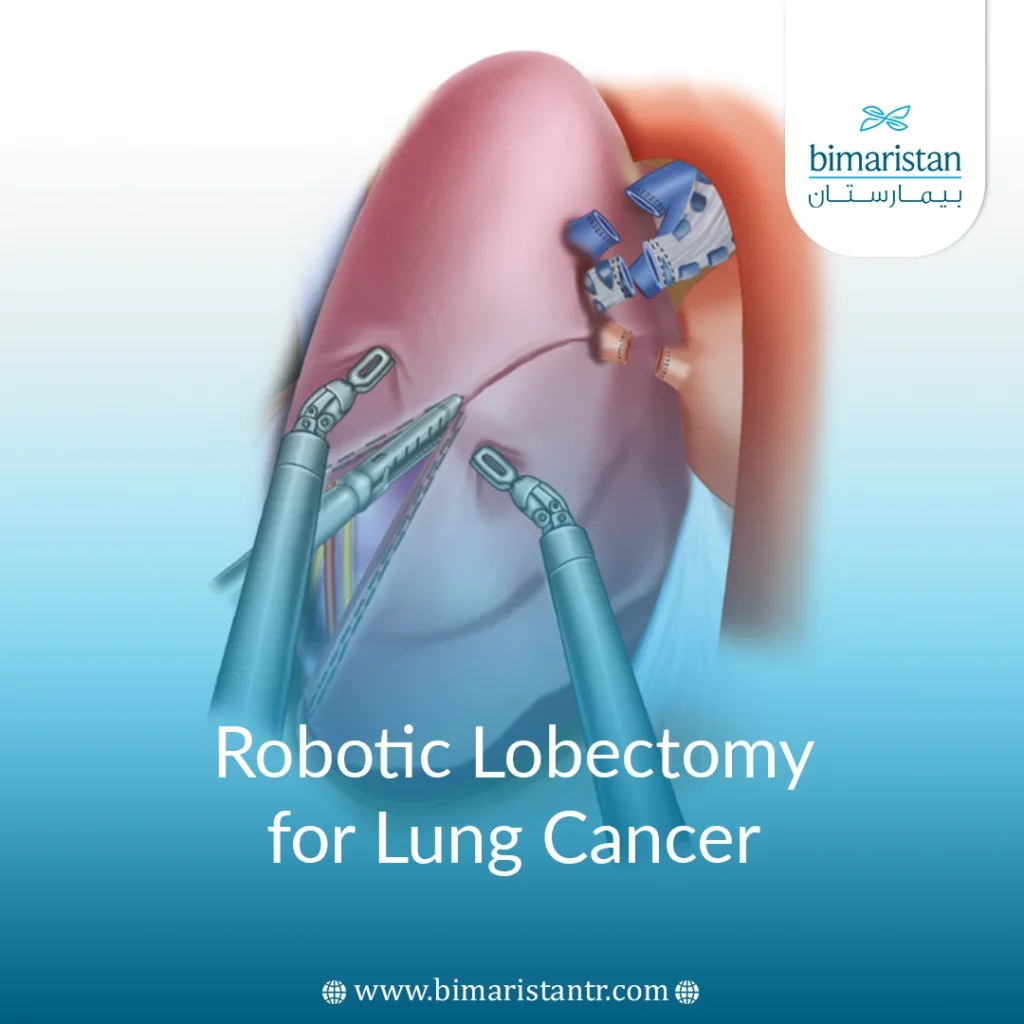Robotic lobectomy for lung cancer involves the use of a camera that provides a detailed view of the inside of the patient’s chest.
The term “robot” can be a bit misleading, as it is not the robot that performs the surgery.
Instead, the surgeon uses surgical instruments that they guide via a console, meaning the surgery is performed with the help of a robot.
Robot-assisted surgery is much less invasive than open chest surgery, providing many healing factors.
It also has fewer risks.
Definition of Robotic lobectomy for lung cancer
Robot-assisted surgery is one of the two minimally invasive alternatives to open chest surgery for lung cancer.
According to the American Lung Association, video-assisted thoracoscopic surgery (VATS) is another minimally invasive surgical intervention option. It means minimally invasive, so the surgeon only makes small cuts when performing the surgery.
Robotic lobectomy uses a computer-enhanced robotic technology called the da Vinci Surgical System.
This system allows the surgeon to operate on the chest area using a high-resolution 3D camera and small rotating instruments.
These tools move similarly to the human hand but with a greater range of motion and precision.
Since the first robotic surgery system was introduced in 2000, robot-assisted thoracic surgery (RATS) has been adopted by an increasing number of centers worldwide and is today used in 10% of lobectomies.
Here, we review the characteristics and function of the robotic system available today (i.e., the da Vinci Surgical System), outline different techniques for major pneumonectomy via RATS, compare RATS to video-assisted thoracoscopic surgery (VATS) and thoracotomy (thoracotomy means open chest surgery), and speculate on future developments
How is the surgical procedure performed?
During robot-assisted surgery, the surgeon sits at a console and makes small cuts through which the procedure is performed.
They then insert a camera and miniature surgical tools into the lung cancer area. The console transmits a 360-degree camera view of the surgical field.
The surgeon holds the controls and makes small hand movements.
The system translates these into small movements with surgical instruments inside the lungs.
Finally, the surgeon removes the lung tissue through an incision along with surgical instruments.
The doctor will consider the person’s condition and medical history before deciding whether robot-assisted surgery is an appropriate option for them.
A person may be suitable for this type of surgery if the tumor is close to the outside of the lungs and not connected to blood vessels.
Types of robotic lobectomy for lung cancer
Surgeons may use robotic technology for three types of lung cancer surgery. These include:
- Pulmonary lobectomy: This term refers to removing the entire affected lobe (affected part) of the lung.
- Wedge resection: This procedure involves removing the tumor and removing the affected tissue from among the healthy lung tissue surrounding it using a triangular instrument called a wedge.
- Partial Segmentectomy: In this procedure, the surgeon removes more tissue than during a wedge resection but less tissue than during a lobectomy.
Research comparing outcomes for people with non-small cell lung cancer after the three types of surgery has found a link between pulmonary lobectomy and higher survival rates.

Among participants for whom pulmonary lobectomy was not appropriate, outcomes were better when they had segmentation surgery than with wedge resection.
Pulmonary lobectomy may yield better results, but not everyone can have this procedure.
For example, researchers in one study noted that doctors may recommend either resection or fractionation for people who have a limited amount of early-stage lung cancer.
These two options are called subtotal resection.

What are the benefits and risks of robotic lobectomy for lung cancer?
Benefits
Because robotic lobectomy is minimally invasive, it has many benefits. These include:
- Shorter hospital stay.
- Faster return to normal life.
- Less pain.
- Fewer complications.
- Less blood loss.
- Smaller scars.
- Do not cut the sternum or ribs.
The body’s response to robot-assisted surgery varies from person to person.
A person’s response depends on several factors, such as his or her medical history and the type of lung cancer.
A study in the Annals of Thoracic Surgery compared the effects of robotic lobectomy with those of open thoracic lobectomy.
The researchers found that robot-assisted surgery reduced complication rates and shorter hospital stays.
Other research in the Journal of Thoracic and Cardiovascular Surgery looked at long-term survival rates for people who underwent robotic lobectomy to treat non-small cell lung cancer.
That the 5-year survival rates are promising.
In addition to the advantages over open chest surgery, robot-assisted surgery may have more advantages than video-assisted thoracic surgery.
For example, it provides the surgeon with better vision and greater precision of movement.
However, more research is necessary to determine whether the benefits improve patient outcomes.
Risks
All surgeries, even minimally invasive surgeries for lung cancer, contain risks, such as:
- Air leakage from the lungs
- Bleeding
- Infections
- Pain
- Arrhythmia
What should you expect before you go into surgery?
- Robotic lobectomy typically involves the following steps:
- The affected person undergoes general anesthesia before the operation.
- The surgeon inserts a breathing tube into the patient’s airway.
- The surgeon makes 1 to 5 small cuts between the patient’s ribs.
- The surgeon inserts a camera and surgical instruments between the ribs.
- Once the procedure is complete, the surgeon will insert a chest tube through one of the incisions to drain any excess air or fluid.
- The chest tube remains in place for several days, and healthcare professionals will remove it before the patient goes home.

